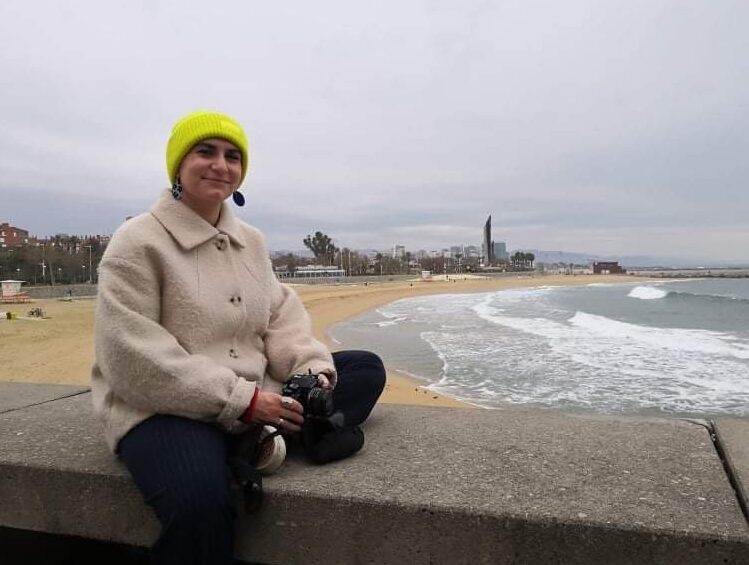Giulia I. Preponis (She/They)

My individual practice revolves around issues related to mixed heritage, culture, and activism. Having a background in both spatial design and social work, I enjoy the design-led exploration that leads us to question the methods and places we manifest our active citizenship in.
I always aim for my work to go beyond the aesthetics of design and know that I’m not as interested in the way something looks but rather how something makes one feel and how imagination reacts to that feeling. I believe that the more a design is able to create a sense of doubt or questioning to who we are as individuals and the way we navigate certain experiences, the better. In the end, the more something feels out of place, the more we associate with it. We associate with its awkwardness and its loud confusion. I believe that the very thing that makes it stand out, is what makes it fit in. My usage of collage art within every project is an attempt at translating and exploring my relationship with society and my role within it.
My designs and work are an extension of my creative identity, an identity that is ever-changing and constantly redefining its meaning. Yet they aim to all leave a trail of curiosity towards our role and purpose as human beings. I push my projects to often go as far as challenging the meaning of design and the spaces around us, by taking on given prompts with the intent of proving a point, a concept and a movement, so to demonstrate how design can challenge perceptions, and even become systems. I believe design has the power to change one’s perspectives and approach to life but to do so in a way that feels like the change is happening from within. My work focuses on pursuing this feeling as I continue creating work that help the audience understand the influence design can have on how we navigate and evolve in the world.

Design Outcome – Stage 3
A Migrating Identity
But where are you really from? From the denial of one’s identity to the stereotyping of one’s heritage, the mixed heritage experience has always been here, yet only recently has its existence been acknowledged by others. Mixed heritage individuals navigate the exploration of their cultural identity in a world where they are made to choose a side of their heritage, thus further upholding white supremacy.
My project creates awareness of the mixed heritage experiences and acknowledges its complexities. Using food as a tool to facilitate difficult conversations, it provides guidance on how to navigate aspects of the mixed heritage experience and identity, in the form of recipes. Its aim is to encourage individuals to take ownership of their own narrative.
Carism
Carism – Active citizenship manifested through care
A Stage 2 Citizenship project on the topic of Care by Giulia Preponis, Hanyu Duan and Emese Stork.
Carism is a social movement that believes in the interconnectivity of the well-being of all living and non-living entities, and that care-giving and care-receiving can become the most important social, economic and cultural activity. And the CareNet is a tool that puts the philosophy of Carism to practise to create a nurturing environment that promotes personal, emotional and institutional growth through care.
Our project is about care. More specifically, active citizenship manifested through care. The project aims to formalise people’s desire to care and place their dedication to the community at the core. We’re doing this by bringing them together and facilitating those caring actions, and creating a unique language that allows them to take ownership of their desire to care and practice care.
Press Play
Responding to the RSA brief “How might we support all families, carers and communities to play and learn more creatively at home?”, we created a a tool that allowed non-english speaking children to better integrate into their new environment by sharing their culture in a non-verbal way. Many schools tend to not celebrate the different cultures and languages present in the classroom and prefer to focus on a more uniform Scottish curriculum. A large part of EAL teacher’s job is trying to educate teachers and others to be more open and welcoming of different cultures and showing how this can result in a better classroom learning environment.
Our toolkit facilities the integration of newly immigrated children into their new environment by allowing them to still celebrate their home culture and welcoming the new host one. It allows for individuals to not have to let go of their previous cultural identity, but rather ensures that the addition of the new cultural influences, are easily merged together.


















